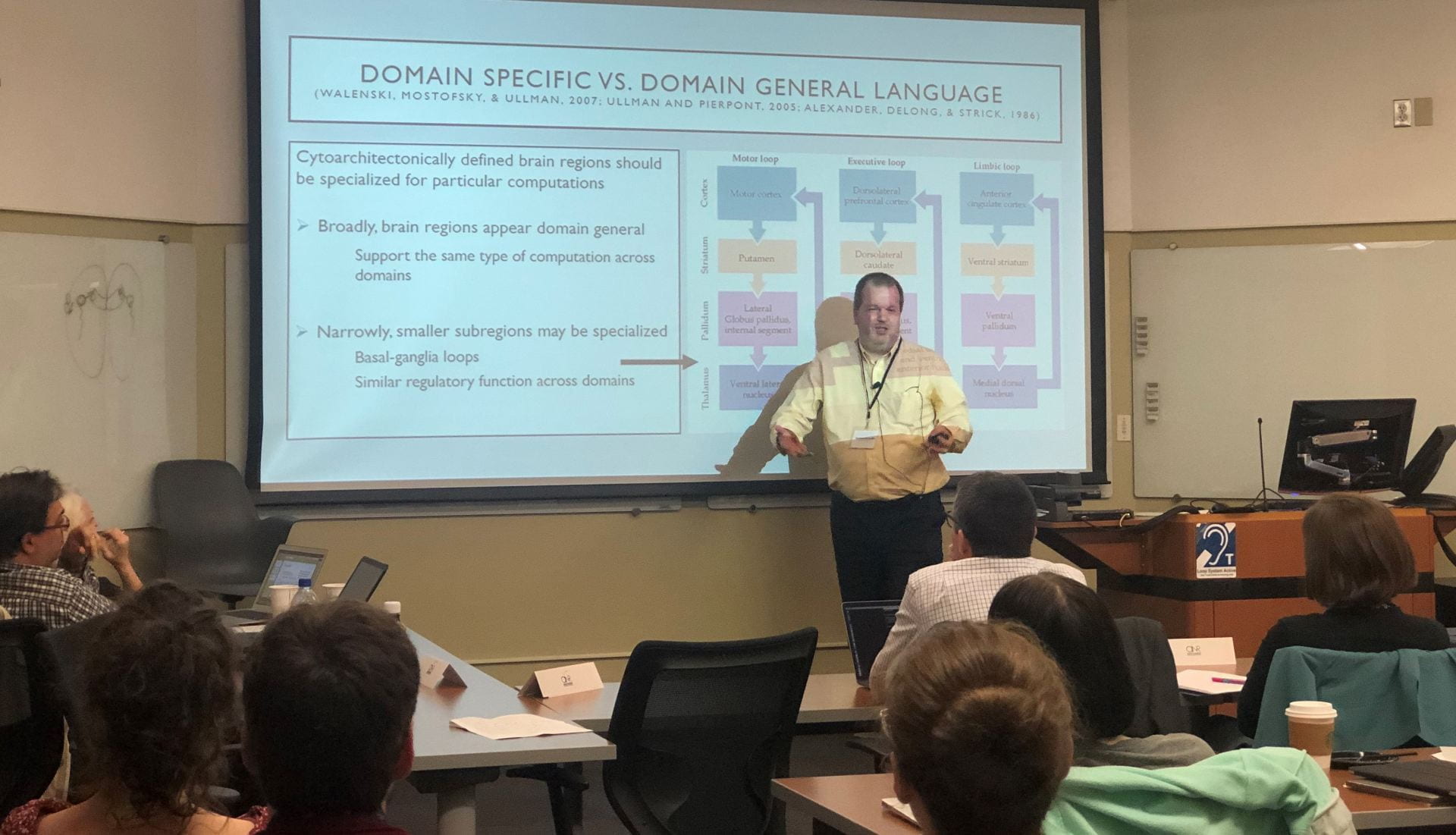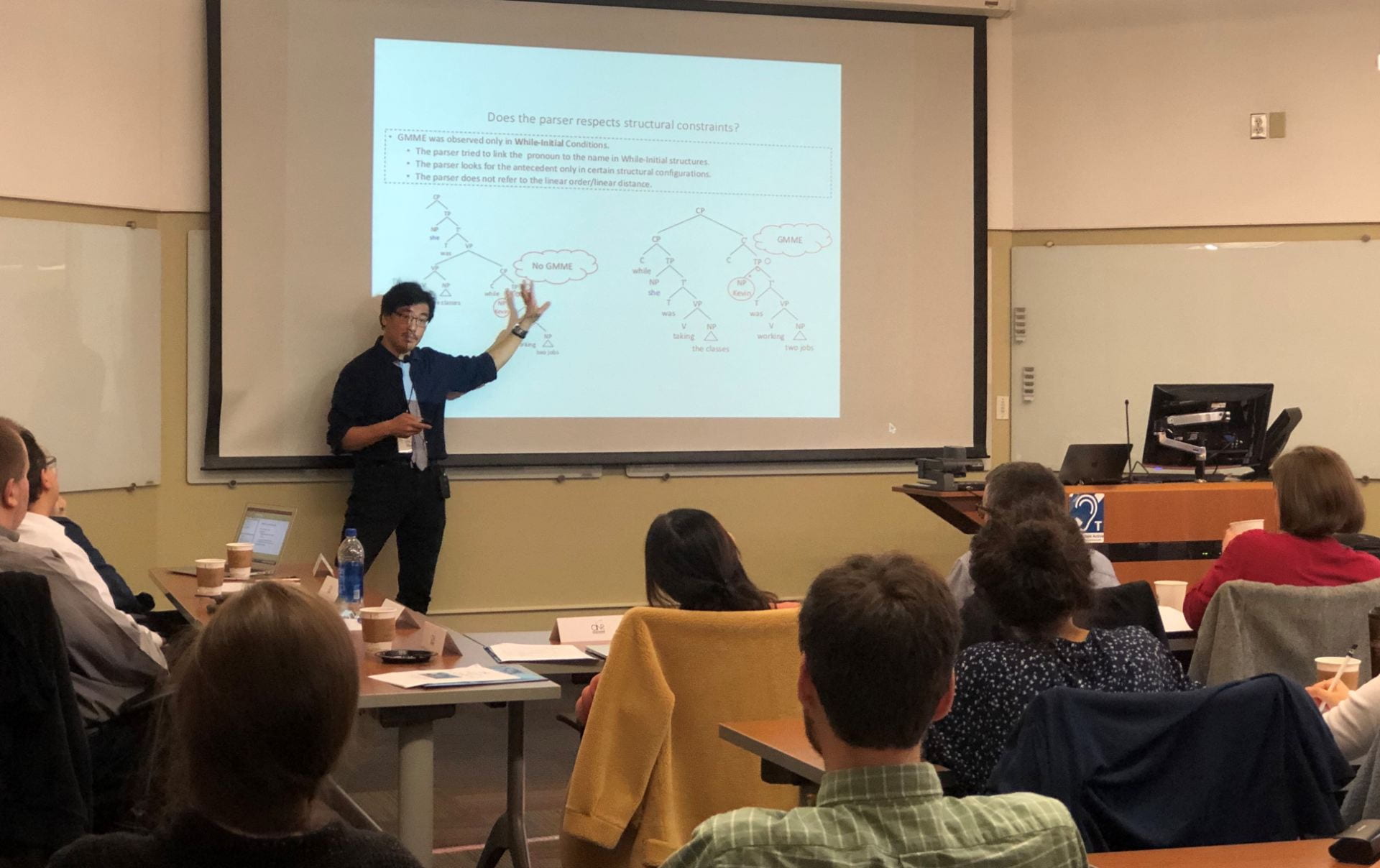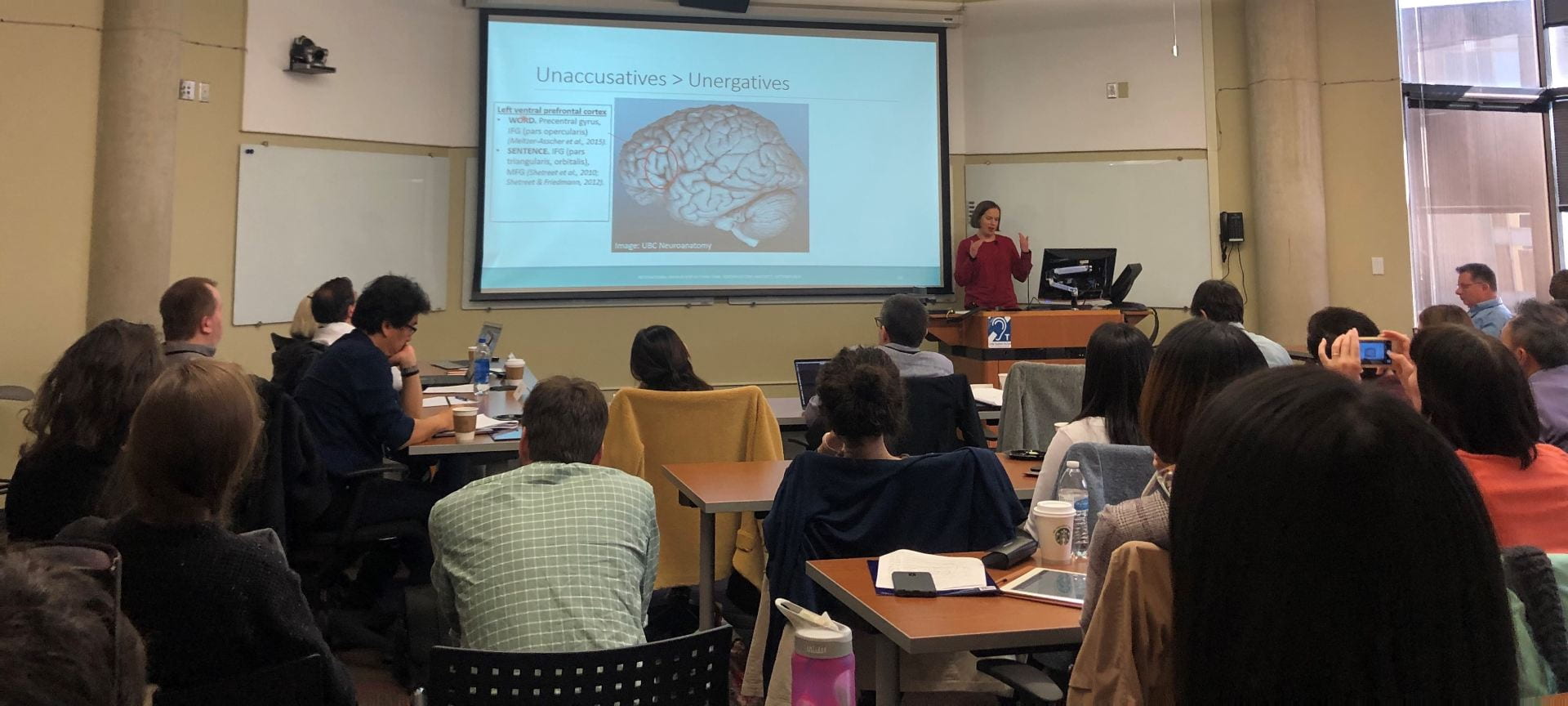Welcome!
Dates: October 11-12, 2019
Location: Northwestern University
Evanston, Illinois
Workshop goals
This workshop will bring together researchers who study the neural organization of syntax. The goal of the workshop is to summarize the state-of-the-science based on research with both neurotypical and aphasic participants and, crucially, to identify future directions for research in the area. The two-day meeting will include presentations from invited speakers and open discussion sessions on critical topics, including the neurofunctional architecture of syntax and its components and neurocognitive interfaces between syntax and other linguistic and domain-general processing systems.
You may also view/download the IBSTT photos here!
Workshop program
View our full program here.
Important Information
View the IBSTT invited speaker’s presentations here!
Invited speakers
Giosué Baggio (Norwegian University of Science and Technology)
Borna Bonakdarpour (Northwestern University)
Maria Garraffa (Heriot-Watt University)
Yosef Grodzinsky (Hebrew University, FZ Jülich)
Chris Kennedy (University of Chicago)
Richard Lewis (University of Michigan)
Jennifer Mack (University of Massachusetts)
Matthew Nelson (University of Alabama Birmingham)
Cynthia Thompson (Northwestern University)
Rosemary Varley (University College London)
Spyridoula Varlokosta (University of Athens)
Matthew Walenski (Northwestern University)
Ming Xiang (University of Chicago)
Masaya Yoshida (Northwestern University)
Program committee
Borna Bonakdarpour (Northwestern University)
Nayoun Kim (University of Toronto)
Matthew Nelson (University of Alabama Birmingham)
Matthew Walenski (Northwestern University)
Masaya Yoshida (Northwestern University)
Poster presentations
Elena Barbieri, Sladjana Lukic, Brianne Chiappetta, Borna Bonakdarpour, David Caplan, Swathi Kiran, Brenda Rapp, Todd Parrish & Cynthia K. Thompson. Investigating sentence production and comprehension deficits in chronic aphasia: a Voxel-based Lesion-Symptom Mapping (VLSM) approach.
Kyla Guillaume, Marsel Mesulam, & Borna Bonakdarpour. Resting state neural networks underlying agrammatism in primary progressive aphasia.
Nayoun Kim, Laurel Brehm, & Masaya Yoshida. Antecedent retrieval in ellipsis vs. nominal anaphoric elements.
Ryan Law & Liina Pylkkänen. Lists with and without syntax: How the presence of global syntactic structure affects localized MEG activity.
Chia-Hsuan Liao, Wing Yee Chow, & Ellen Lau. The time course of computing verb-argument relations in sentence comprehension: evidence from the N400.
Charles Lin, Feier Gao, & Siqi Lyu. Processing Phonological Alternations at the Morphosyntactic Interface.
Jiayi Lu, Matthew Walenski, & Cynthia Thompson. Syntactic Expectations Influence the Comprehension of Chinese Relative Clause.
Evguenia Malaia, Tossie Ikuta, & Ronnie Wiblur. Neurofunctional architecture underlying syntactic processing in American Sign Language.
Grace Man, Austin Keen, & Jiyeon Lee. Facilitating sentence production in aphasia: effects of verb overlap and repetition on structural priming.
Karen Martini, Adriana Belletti, & Maria Garraffa. Syntactic complexity in the presence of an intervener: the case of an anomic Italian speaker.
Alicia Parrish & Liina Pylkkänen. Conceptual composition without syntax and syntax without conceptual composition – Support from LATL and LIFG activation in sentence processing with MEG.
Anastasia Stoops, Tania Ionin, & Susan Garnsey. An investigation of neural oscillations as a signature of word order effects in Russian.
Xiao Yang, Stephen Politzer-Ahles, Utako Minai, Alison Gabriele, & Robert Fiorentino. Temporal mismatches guide the prediction of Mandarin relative clauses: An ERP study.




























